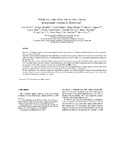| dc.contributor.author | Thior, I. | |
| dc.contributor.author | Gabaitiri, L. | |
| dc.contributor.author | Grimes, J. | |
| dc.contributor.author | Shapiro, R. | |
| dc.contributor.author | Lockman, S. | |
| dc.contributor.author | Kim, S. | |
| dc.contributor.author | Kebaabetswe, P. | |
| dc.contributor.author | Garmey, E. | |
| dc.contributor.author | Montano, M. | |
| dc.contributor.author | Peter, T. | |
| dc.contributor.author | Chang, S. | |
| dc.contributor.author | Marlink, R. | |
| dc.contributor.author | Essex, M. | |
| dc.date.accessioned | 2010-08-23T09:37:16Z | |
| dc.date.available | 2010-08-23T09:37:16Z | |
| dc.date.issued | 2007 | |
| dc.identifier.citation | Thior, I. et. al (2007) Voluntary counseling and testing among post-partum women in Botswana, Patient Education and Counseling, Vol. 65, No. 3 pp. 296–302 | en_US |
| dc.identifier.issn | 0738-3991 | |
| dc.identifier.uri | http://hdl.handle.net/10311/588 | |
| dc.description.abstract | Objective: To determine uptake and socio-demographics predictors of acceptance of voluntary counseling and testing (VCT) among postpartum women in Botswana.
Methods: Women attending maternal and child health clinics for their first post-partum or well baby visit in three sites in Botswana were
offered VCTafter a written informed consent. A standardized questionnaire was used to collect socio-demographic characteristics and reasons for declining VCT.
Results: From March 1999 to November 2000, we approached 1735 post-partum women. Only 937 (54%) of those approached accepted
VCT. In multiple logistic regression analysis, younger maternal age, not being married, and less formal education were significant predictors of acceptance of VCT. Thirty percent of women who accepted VCT were HIV-positive. Conclusion: Our results indicated that in Botswana prior to the initiation of a government Mother to Child Transmission (MTCT) prevention program, younger, unmarried, and less educated post-partum women were more likely to undergo VCT.
Practice implications: Our results have shown that interventions to improve VCT among post-partum women and more generally among
women of reproductive age are warranted in Botswana. These interventions should account for differences such age, marital status, education,
and partner involvement to maximize VCT uptake. | en_US |
| dc.language.iso | en | en_US |
| dc.publisher | Elsevier www.elsevier.com/locate/pateducou | en_US |
| dc.subject | VCT | en_US |
| dc.subject | Post-partum women | en_US |
| dc.subject | HIV | en_US |
| dc.subject | Botswana | en_US |
| dc.title | Voluntary counseling and testing among post-partum women in Botswana | en_US |
| dc.type | Published Article | en_US |
| dc.link | 10.1016/j.pec.2006.08.010 | en_US |

